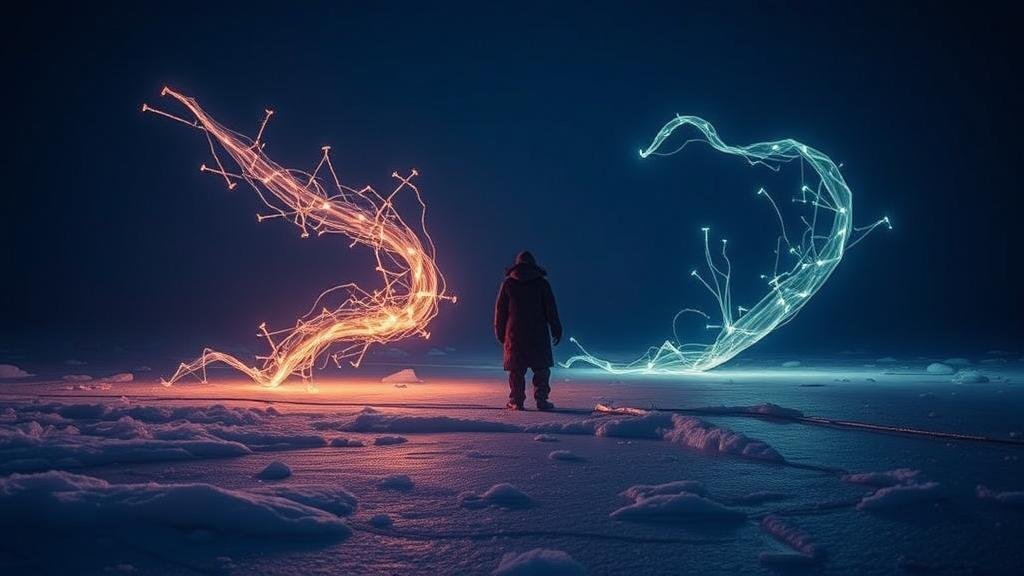Investigating the polar seas for glowing plankton swarms that mirror ancient tales of sea spirits.
Investigating the Polar Seas for Glowing Plankton Swarms
The polar seas, encompassing the Arctic and Antarctic regions, are not only vital to the Earths climate and ecosystems but also steeped in mystical lore. Ancient tales from indigenous cultures often speak of ethereal sea spirits, a narrative intriguingly mirrored today by the bioluminescent swarms of plankton that inhabit these frigid waters. This article delves into the fascinating world of glowing plankton, exploring their scientific significance and the rich cultural tapestry they weave.
The Science Behind Bioluminescence
Bioluminescence is the ability of certain organisms to produce light through biochemical reactions. In polar seas, this phenomenon is primarily attributed to dinoflagellates, a type of plankton. These tiny marine organisms can emit light when agitated, creating breathtaking displays in the water, especially during specific seasons. According to a study conducted by the U.S. National Oceanic and Atmospheric Administration (NOAA), species such as Pyrocystis fusiformis and Protoperidinium are responsible for a majority of bioluminescent occurrences in these waters.
Historical Context and Cultural Significance
Throughout history, glowing waters have captivated human imagination. Various cultures have ascribed spiritual significance to these phenomena. For example:
- The Inuit people of Alaska tell stories of the Sea Woman, a spirit that dances on the waves, creating beautiful lights in the ocean.
- In Norse mythology, the northern lights, believed to be connected to spirits in the sea, were often attributed to reflections off luminous waters.
These narratives emphasize a deep respect for the ocean and its mysteries, highlighting human attempts to understand natural phenomena through storytelling.
The Role of Plankton in Ecosystems
Plankton, particularly bioluminescent varieties, play a crucial role in marine ecosystems. serve as fundamental food sources for larger marine animals, including fish and whales. According to findings from the global Ocean Data Partnership, plankton accounts for nearly 40% of the primary production in the oceans, serving as a cornerstone of the aquatic food web.
Also, the presence of bioluminescent plankton indicates healthy marine environments. Their flourishing populations signal balanced ecosystems, essential for the well-being of marine biodiversity.
Modern-Day Research and Exploration
Recent scientific expeditions have focused on studying marine bioluminescence in polar regions. For example, the Arctic Ocean has been the subject of research led by the Alfred Wegener Institute, which aims to measure the impacts of climate change on marine life. During these expeditions, researchers observed massive swarms of bioluminescent plankton, some stretching over several kilometers.
Data collected indicated not only the distribution patterns of these organisms but also their responses to environmental changes, such as temperature and salinity variations. Researchers found that warmer waters due to climate change could lead to shifts in plankton populations, affecting entire marine food webs.
Real-World Applications and Implications
Understanding bioluminescent plankton sheds light on broader ecological issues, including climate change and marine conservation. study of these organisms can lead to more effective strategies for:
- Protecting marine ecosystems while ensuring sustainable fishing practices.
- Monitoring climate change indicators through shifts in plankton populations.
Also, advancing technologies, such as underwater drones equipped with bio-sensors, developed to monitor bioluminescence patterns, allowing for non-invasive exploration of polar marine environments.
Conclusion: Uniting Science and Spectacle
Investigating glowing plankton swarms in the polar seas not only offers a window into marine ecology but also preserves the rich narratives of our ancestors. As we continue to blend science with the awe-inspiring lore of the sea, we forge deeper connections with our planets natural wonders. Future explorations will undoubtedly illuminate more secrets of the ocean, reinforcing the belief that these glowing swarms are indeed akin to the spirits of the sea, continuing to inspire wonder across generations.
For those interested in diving deeper into this mesmerizing field, consider participating in local marine biology programs or citizen science projects that focus on monitoring and understanding bioluminescent organisms. Your engagement can contribute positively to marine conservation efforts and enrich your appreciation for the intricate dance of life in our oceans.



